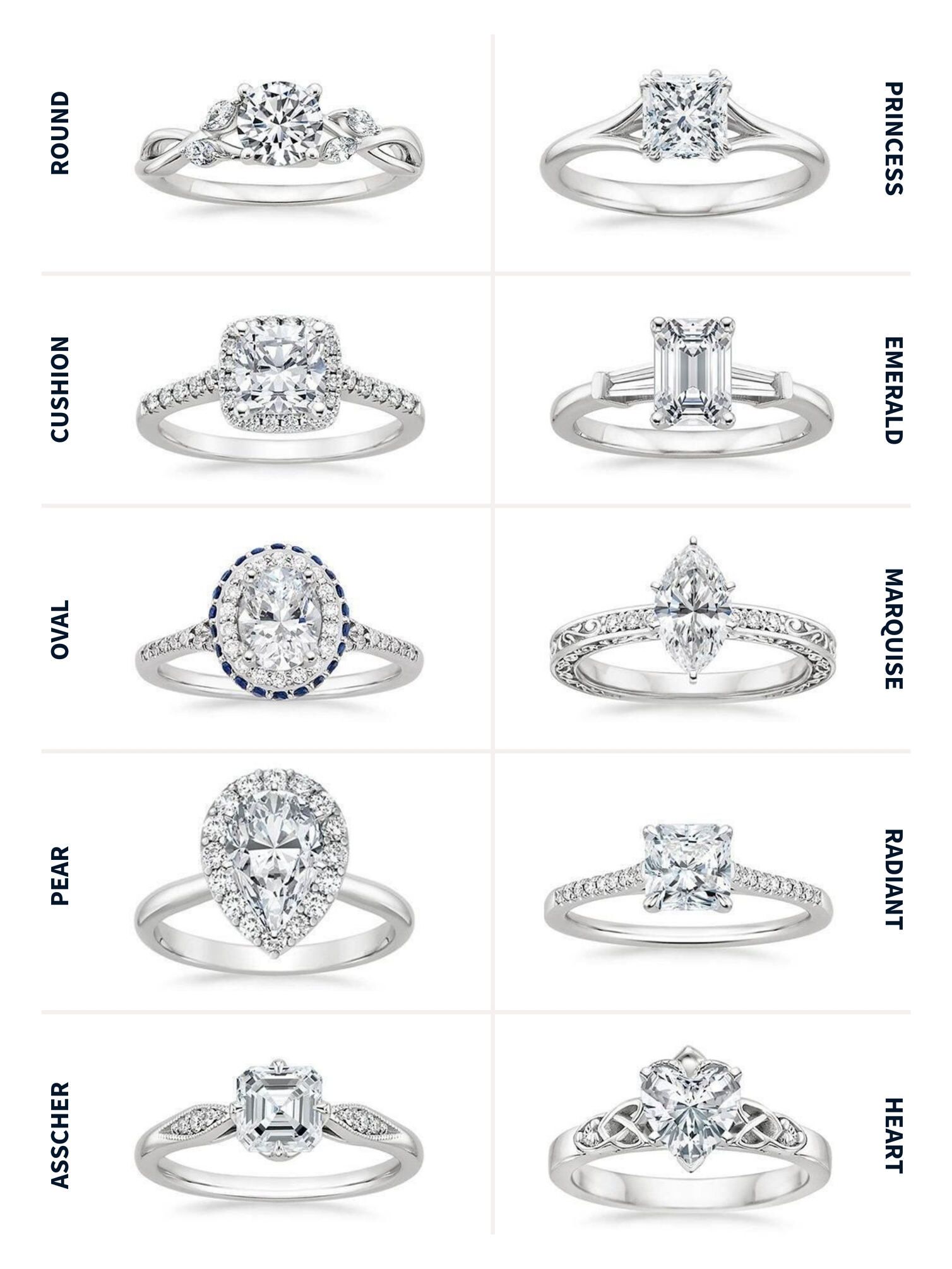Fascination About Engagement Rings
Fascination About Engagement Rings
Blog Article
Engagement Rings Can Be Fun For Everyone
Table of ContentsEngagement Rings Fundamentals ExplainedThe Best Strategy To Use For Engagement RingsThe Engagement Rings DiariesThe Buzz on Engagement RingsThe Best Guide To Engagement RingsEngagement Rings for Beginners
Tension-style settings additionally supply better safety and security for the gems. Many tension-style setups are made for rounded brilliant rubies or other round gemstones, but they can be customized to fit several other shapes. The setting can additionally be changed to have accent gems around the centre rock or to allow for a side rock on each side of the centre rock.Creates an optical impression of the centre gems hanging in the air. If it has prongs, they can end up being loosened with wear. This is conveniently remedied by having the ring consistently cleaned and examined by a jeweller.
Get This Report on Engagement Rings
The very first ring with a true stress setup was made in Vreden, Germany in the 1970s. Ursula Exner and well-known sculptor Walter Wittek functioned together to design and make this first ring. In the complying with years, other jewellers made their own tension settings, as well as the extra protected and practical tension-style setups.

This provides the ring a straightforward, but stylish appeal that works well for both males and females's wedding celebration rings, as well as engagement rings. The flush setup is sometimes likewise called a gypsy setup. We can't state without a doubt how it came to have that name, but probably it is since the setting stands for a complimentary spirit.
Not known Details About Engagement Rings
Flush settings work well for round, square or rectangle-shaped gemstones, but they can be difficult to adapt to particular elegant cuts, for instance, a heart-shaped diamond. Maintains the gemstones secure and safe and secure.
Reminds the owner to grow a totally free spirit (engagement rings). Since the gems are embeded in the shank, they obtain a limited quantity of light and produce less brilliance. Commonly impractical for heart-shaped treasures and a few other gems with expensive cuts. Rings with flush or gypsy setups have actually been around because the late 1800s.
Jewelry engagement rings have just one centre gemstone on a plain band. Several other interaction rings, though, also have accent gems. Accent treasures can be diamonds or a variety of other gemstones. They normally range in size from little to moderate and are set close together. Accent treasures are contributed to involvement rings particularly to enhance radiance and glimmer.
The 9-Minute Rule for Engagement Rings
There are 4 settings that are widely made use of to hold accent gemstones. Castle setups are made directly on the shank of the ring.
The prongs in a castle setting can be directly and down with simple rounded ideas or they can be reduced at an angle to make sure that they resemble fishtails. These fishtail prongs can also be called French cut prongs. Castle setups are really flexible. They can be established totally around the shank, simply placed across the ring's shoulders or used to produce a halo around the centre gemstone.
A Biased View of Engagement Rings
The metal sides of the castle setting are always reduce reduced, usually in a scallop pattern. This enables a lot more light to get to the accent treasures and boosts their luster. If it is well made, the low scalloped side of the castle setting can likewise produce a visual fallacy. It allows the sides of the gemstones to be easily seen and produces the perception that the gems are being kept in an unseen setup.
Develops the impression of an undetectable setting. The tiny prongs can become loosened. We suggest that rings with the castle setup be cleaned occasionally by a jeweller, so that the prongs can be inspected.
The prongs on a castle setting can catch on garments, but right here this is rare because the prongs are smooth. The castle setting can be made use of to make beautiful infinity rings. The very first eternity rings were created in the 1960s. Those original rings, like endless time rings today, have a row of very closely set gems completely visite site surrounding their shank.

Some Known Questions About Engagement Rings.
The bead setup is a really secure setting. The sides of the network secure the accent gems from bumps and scrapes and the beaded prongs seldom end up being loose. One drawback of the bead setting is that the gems receive less light because they are established down in the network. This results in the treasures creating a little much less brilliance and sparkle.
Every gem in the grain setup is surrounded by 4 glossy beads that are level with the top of the shank. These grains capture the light and emit their own glimmers everywhere. The beads' sparkles along with the sparkle and sparkles produced by the accent gems bring the grain setting to life and provide it continuous shimmers.
They can utilize visit site it to make infinity rings, in addition to to decorate the basic shank or even more detailed split shank that some engagement rings have. In the standard grain setting, the accent gems are embeded in one straight line. Sometimes, though, jewelers will certainly raise the sparkle on an engagement ring by including 2 or more parallel lines of grain set gems.
Report this page